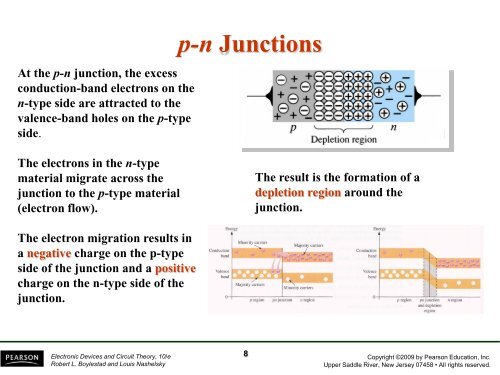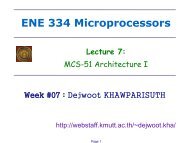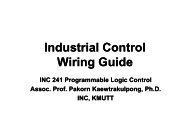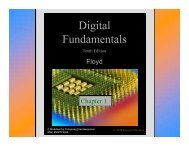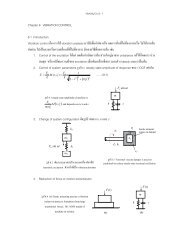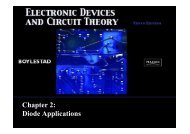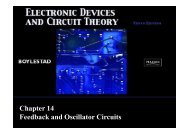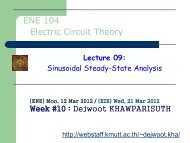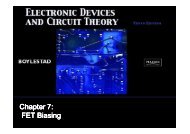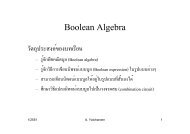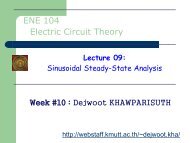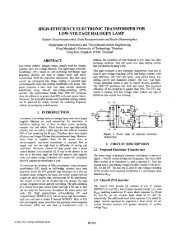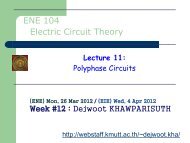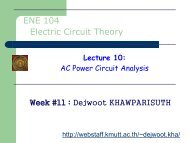Lecture 1 - Webstaff.kmutt.ac.th - kmutt
Lecture 1 - Webstaff.kmutt.ac.th - kmutt
Lecture 1 - Webstaff.kmutt.ac.th - kmutt
Create successful ePaper yourself
Turn your PDF publications into a flip-book with our unique Google optimized e-Paper software.
At <strong>th</strong>e p-n junction, <strong>th</strong>e excess<br />
conduction-band electrons on <strong>th</strong>e<br />
n-type side are attr<strong>ac</strong>ted to <strong>th</strong>e<br />
valence-band holes on <strong>th</strong>e p-type<br />
side.<br />
p-n Junctions<br />
The electrons in <strong>th</strong>e n-type<br />
material migrate <strong>ac</strong>ross <strong>th</strong>e<br />
junction to <strong>th</strong>e p-type material<br />
(electron flow).<br />
The result is <strong>th</strong>e formation of a<br />
depletion region around <strong>th</strong>e<br />
junction.<br />
The electron migration results in<br />
a negative charge on <strong>th</strong>e p-type<br />
side of <strong>th</strong>e junction and a positive<br />
charge on <strong>th</strong>e n-type side of <strong>th</strong>e<br />
junction.<br />
Electronic Devices and Circuit Theory, 10/e<br />
Robert L. Boylestad and Louis Nashelsky<br />
8<br />
Copyright ©2009 by Pearson Education, Inc.<br />
Upper Saddle River, New Jersey 07458 • All rights reserved.


